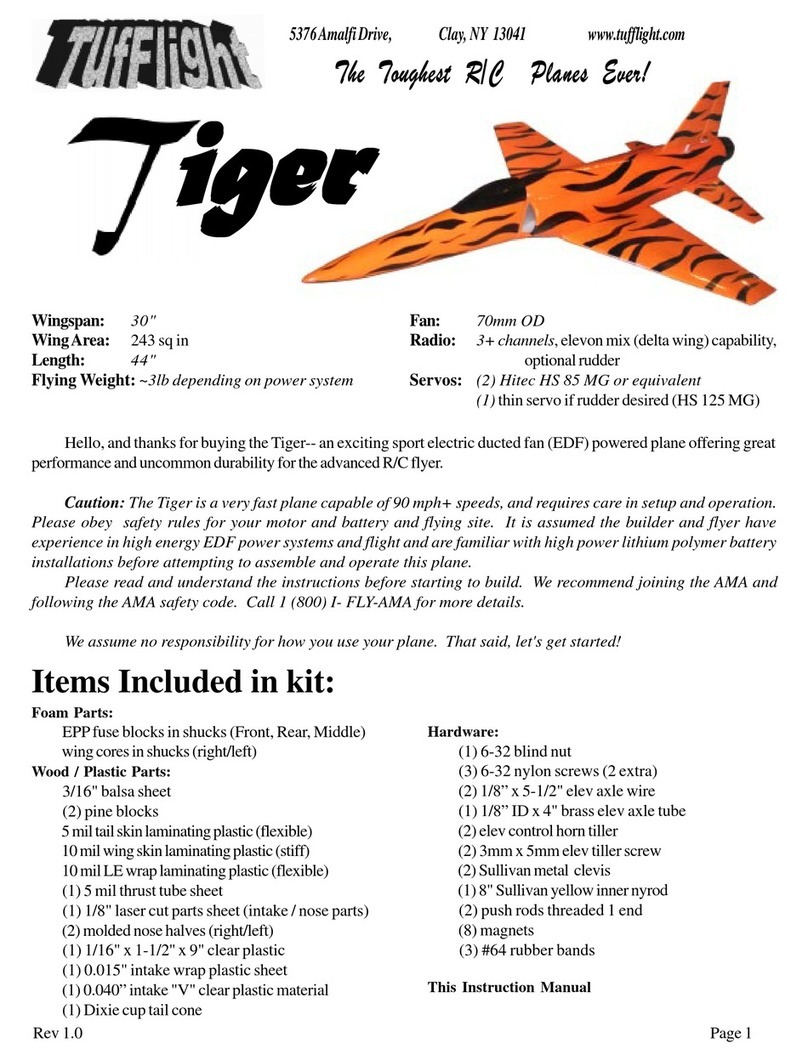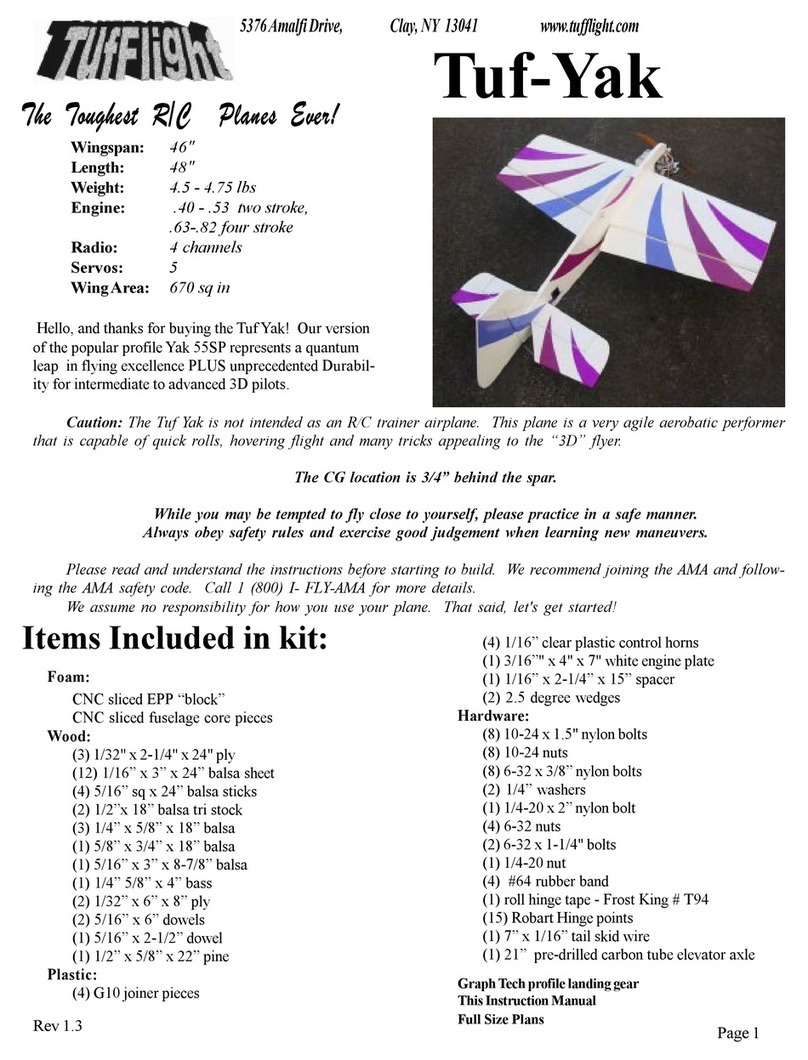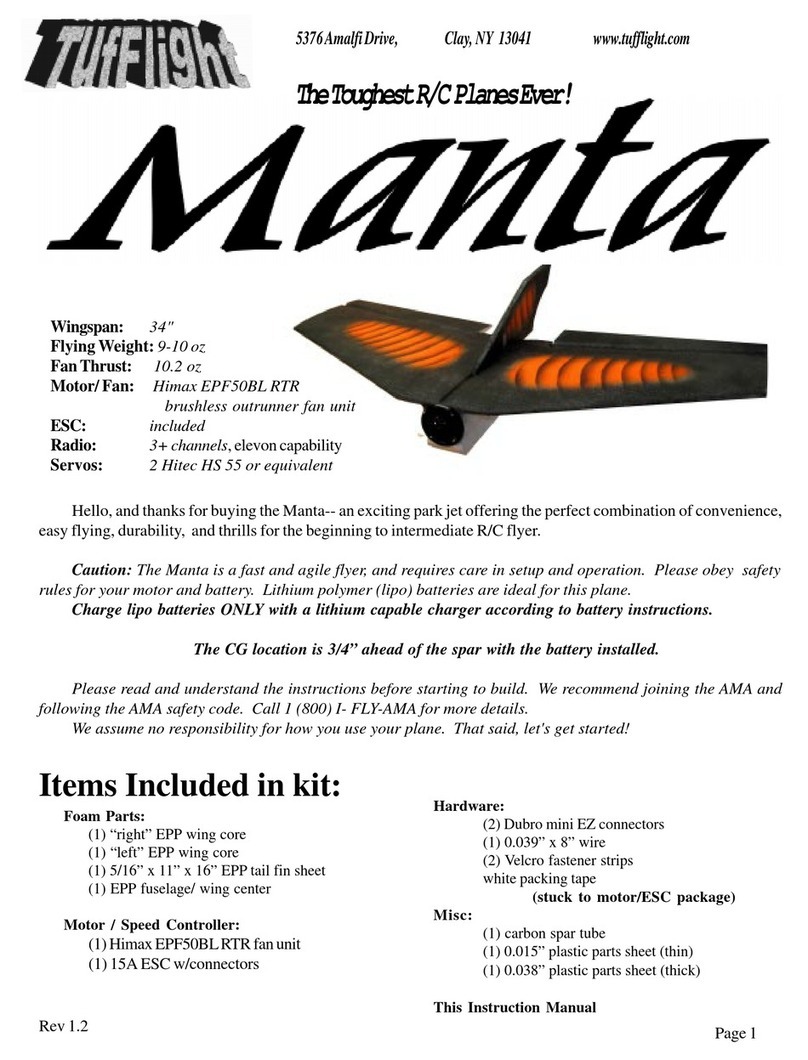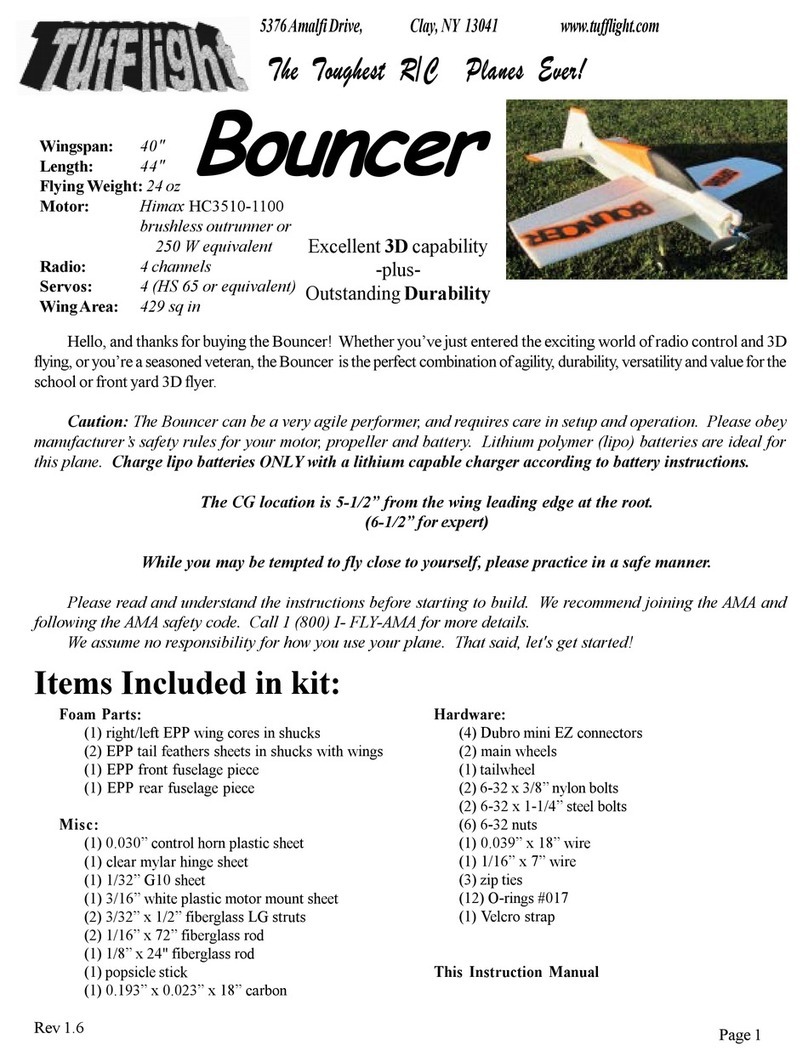
Page 2
Items needed to complete:
Equipment:
.46-.53 two stroke engine
or .63-.82 four stroke
radio receiver
6” aileron extension
(used as battery switch/charging)
battery: 600 mAH
5 servos,
2 aileron, 1 rudder, 1 elevator,
1 metal geared throttle servo if possible
Parts:
1 or 2 rolls Ultracote covering
fuel tubing
poly fill (available at
fabric stores) for radio RX packing
8 oz fuel tank
optional foam rubber under tank (for 4 stroke)
(3) clevises
(7) control horns (Large Dubro “T style”)
(14) 2-56 bolts and nuts for horns and jam nuts
(5) 12” 2-56 single threaded end push rods
(2) 3” 2-56 double threaded end push rods
(1) 2-56 x 1” threaded rod
4 feet pull pull cord and 2 crimp tubes
nyrod push rods and housing tubes
(2) 3” diameter wheels
(4) 3/16” wheel collars
(4) 4-40 x 1” bolts (for engine mount)
(4) 4-40 nylon insert lock-nuts
(substitute 6-32 for .72 4 stroke)
spinner nut
props : 11x4 for a 40 size 2 stroke
14x4, 13x5 or 13x6 for a 4 stroke
Adhesives:
Elmers “Ultimate” polyurethane glue (formerly
called “Pro Bond” (aka “Poly U”)
3M-77 Spray adhesive
Goop brand adhesive
(household, plumber's, auto,
marine varieties all OK)
hinge tape - Frost King 2" weatherseal # T94
is excellent (25’roll avail at Walmart)
silver solder and flux
medium or thin CA
5 minute epoxy
masking tape
Helpful Tools:
40 grit sandpaper on block
(available at auto finishing stores
and Sears)
hobby knife / utility knife
soldering iron
rat tail file
square
X-acto knife with # 26 blade
(2.25 inches long, great for cutting
servo pockets from foam)
Phillips head screwdriver
straight screwdriver
long nose pliers/wire cutters
drill with:
1/4" bit
3/16” bit
3/32” bit
5/32” bit
1/8" bit (for engine 4-40 bolts)
#48 bit (for push rod servo arm holes)
#49 bit (for push rod throttle arm holes)
Dremel Tool w/ drum sander & cut-off wheel
hacksaw, razor saw, coping saw or band saw
covering iron
felt tip pen
pencil
ruler/straight edge
scissors
36” x 3/8” dowel or similar
flat building table, at least 6 ft long
“spray safe” area for applying 3M spray glue
(ie. outside, or a large box indoors)
mineral spirits for spray glue cleanup
(also great for cleaning fuel/oil residue!)
Useful:
2" wide roll thin clear packing tape for field repairs
big spray can of WD-40 for field cleaning
crashed engines
toothbrush and other small stiff brush for field
cleaning crashed engine
cotton swabs for field cleaning engine carb
plentiful supply of props (11 x 4 for 40 size 2 stroke,
14x4 for 4 stroke)
plentiful supply of 1/4-20 nylon bolts/nuts
plentiful supply of wooden skewers
































